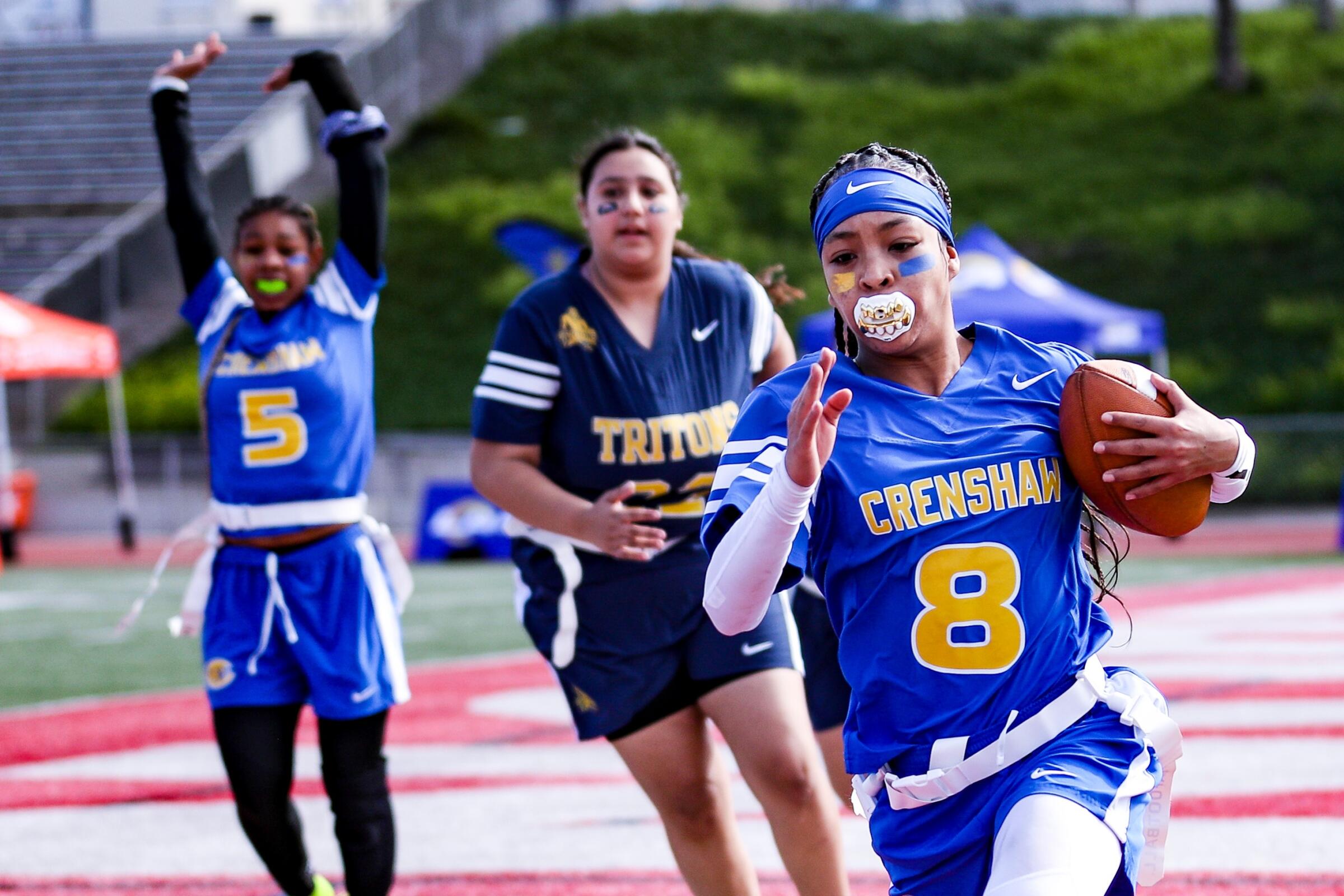For the most part, CIF associate executive director Brian Seymour said, the state rulebook was designed to give schools flexibility with regard to scheduling and field space. Coaches are thrilled clearer guidance, and a rulebook, exist.
But they disagree with many of the specifics.
An analysis:
• Games will be played in two 20-minute halves, with a running clock until the last two minutes of each half.
Reasoning: The time frame allows schools to play a game every hour, Seymour said, important for potential “league nights” where every member of a league can participate in a one-day round of play to fit in as many games as possible.
Argument: “Way too short,” Schulman said.
There’s no screening or blocking
Reasoning: The NCAA has its own set of rules for every sport separate from high school, Seymour said. And the CIF wants to eliminate as much contact as possible given the potential of injury.
Argument: Screening would help to develop quarterbacks for the college level, where more contact is allowed, said Gardena Serra coach Monique Adams.
Runners may not leap or spin to evade a flag grab.
Reasoning: Full spins, Seymour said, could invite more contact, which the CIF wants to limit. Full rules can be found here.
Argument: “That’s the whole point of flag football — it’s showcasing your athleticism and your skills and ability … that’s kind of shocking,” Adams said when told runners couldn’t spin.





